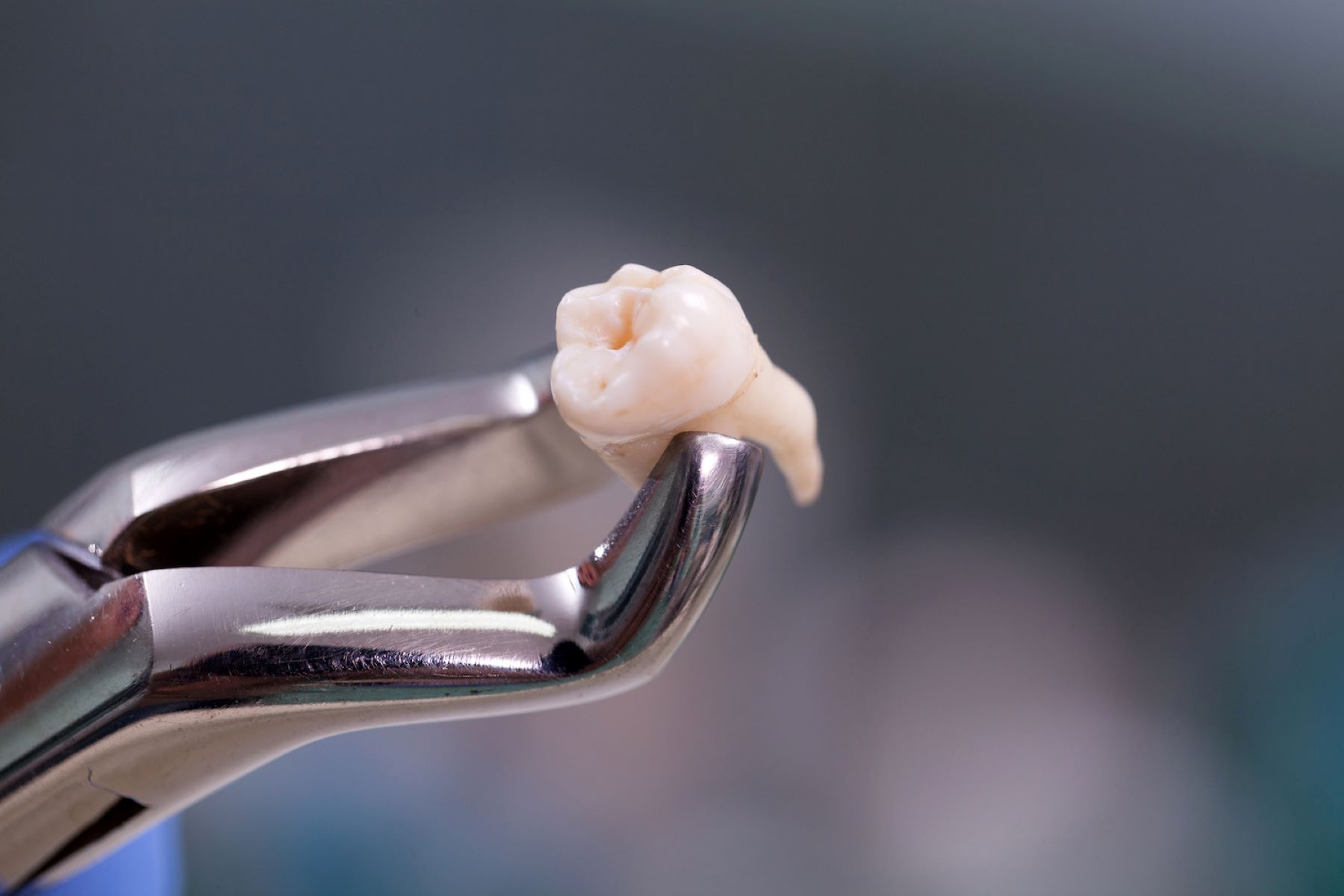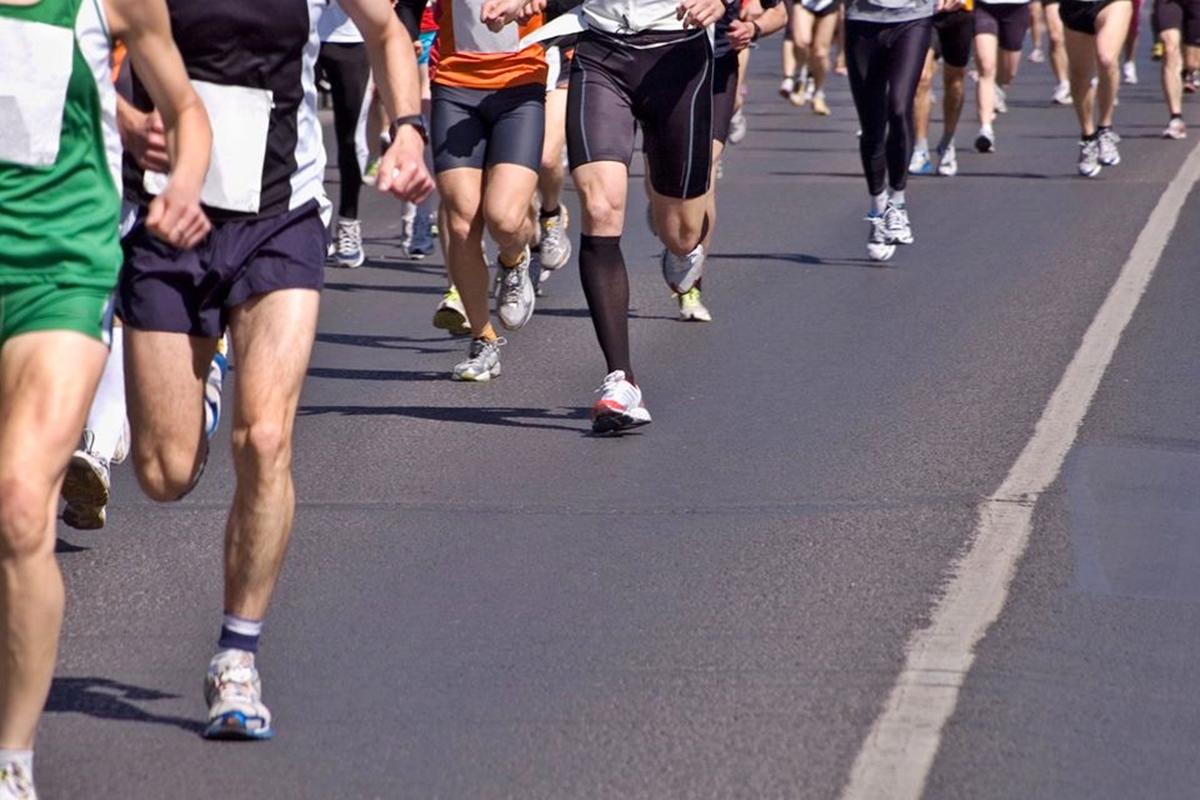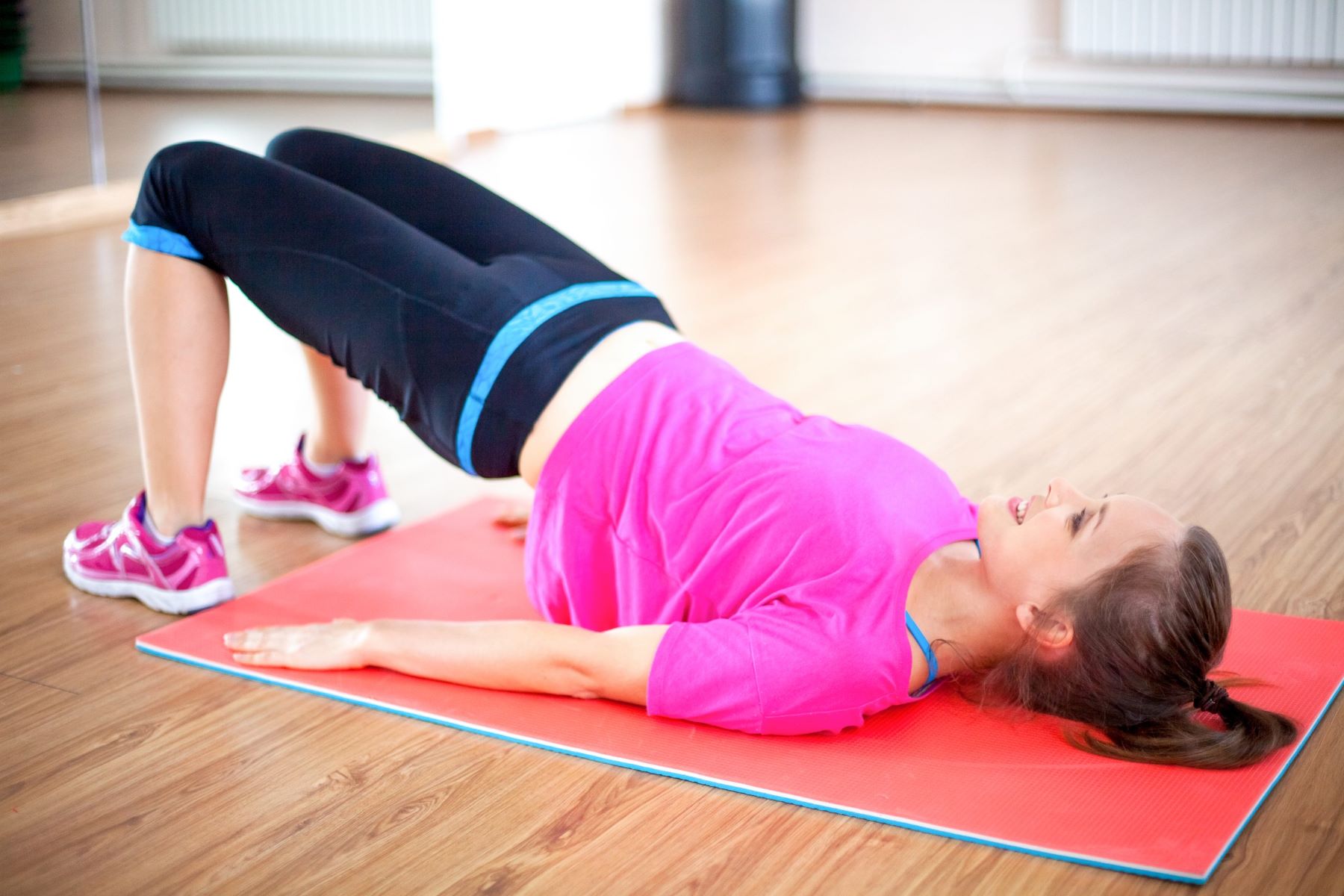Home>Misc>Featured>How Long Should You Wait To Exercise After A Concussion?


Featured
How Long Should You Wait To Exercise After A Concussion?
Modified: January 2, 2024
"Featured: Learn the recommended duration you should wait before resuming exercise after experiencing a concussion to ensure a safe and healthy recovery."
Introduction
Concussions are a type of traumatic brain injury that can occur from a blow to the head, a fall, or any other force that causes the brain to move within the skull. These injuries can have a significant impact on a person’s physical and cognitive function, including their ability to engage in physical activity.
Exercise plays a crucial role in overall health and well-being, but when it comes to recovering from a concussion, it becomes essential to approach exercise with caution. Exercising too soon or engaging in high-impact activities can potentially worsen symptoms and prolong the recovery process.
In this article, we will explore the effects of exercise on concussion recovery and the factors to consider before incorporating exercise into your post-concussion routine. We will also discuss the recommended wait time before resuming exercise after a concussion, signs of readiness to exercise, types of exercises to consider, and precautions to take during the recovery process.
It is important to note that every concussion is unique, and the severity of symptoms and recovery time can vary from person to person. Therefore, it is crucial to consult with a healthcare professional before starting or resuming any exercise regimen after a concussion.
Now, let’s delve into the details and find out how long you should wait to exercise after a concussion and what precautions to take to ensure a safe and effective recovery.
Understanding concussions
A concussion is a mild form of traumatic brain injury (TBI) that can occur when the brain experiences a sudden jolt or impact. This can happen as a result of a fall, a blow to the head, or even from a whiplash-like motion. Although concussions are considered mild, they should never be taken lightly, as they can cause a wide range of symptoms and have implications for both physical and cognitive function.
When a concussion occurs, the brain shifts or rotates inside the skull, causing a disruption in normal brain activity. This disruption can lead to various symptoms such as headaches, dizziness, nausea, confusion, memory problems, sensitivity to light or noise, and even emotional changes.
The severity of a concussion can vary, with some individuals experiencing more mild symptoms that resolve within a few days, while others may have more severe symptoms that persist for weeks or even months. Additionally, repeated concussions over time can lead to cumulative damage and prolonged recovery.
It is crucial to understand that concussions are invisible injuries, meaning that they do not always present visible physical signs. This makes it even more important to recognize and address the symptoms and to allow adequate time for recovery before resuming regular activities, including exercise. Ignoring or rushing the recovery process can lead to complications and hinder the healing process.
Concussions are commonly seen in contact sports such as football, soccer, and hockey, but they can also occur in other situations such as automobile accidents, workplace incidents, or even from a simple slip and fall. Prompt recognition and appropriate management of concussion symptoms are crucial to ensure a safe and complete recovery.
Now that we have a better understanding of what concussions are, let’s explore the effects of exercise on concussion recovery and how to approach exercise safely in the post-concussion period.
Effects of exercise on concussion recovery
Exercise has numerous benefits for overall health and well-being, including improved cardiovascular fitness, strength, and mood. However, when it comes to concussion recovery, the effects of exercise can be complex.
On one hand, incorporating moderate exercise into the recovery process can have positive effects. Exercise promotes blood flow to the brain, which can enhance the delivery of oxygen and nutrients necessary for healing. It can also stimulate the release of endorphins, the body’s natural painkillers, which can help reduce headache and other symptoms associated with concussions.
Physical activity can also have a positive impact on mental health, reducing anxiety and depression, which are common during the recovery period. Engaging in exercise can provide a sense of accomplishment, boosting self-esteem and overall well-being.
On the other hand, exercise can also pose risks if not approached carefully. Engaging in high-impact activities, contact sports, or activities that could increase the risk of head injury can further damage the brain and prolong the recovery process.
It is important to strike a balance between incorporating exercise and allowing the brain adequate time to heal. Pushing too hard or returning to exercise too soon can exacerbate symptoms and delay the recovery process.
It is also important to note that the effects of exercise on concussion recovery can vary from person to person. Factors such as the severity of the concussion, individual tolerance to exercise, and the presence of lingering symptoms can all influence how exercise is tolerated and its impact on recovery.
Now that we understand the potential effects of exercise on concussion recovery, let’s explore the factors to consider before incorporating exercise into your post-concussion routine.
Factors to consider before exercising after a concussion
Before resuming exercise after a concussion, it is essential to consider several factors to ensure a safe and effective recovery. These factors will help determine the appropriate timing and intensity of exercise and minimize the risk of exacerbating symptoms.
Severity of the concussion: The severity of the concussion plays a crucial role in determining when it is safe to resume exercise. More severe concussions may require a longer recovery period, while milder concussions may allow for an earlier return to physical activity. It is important to consult with a healthcare professional to assess the severity of the concussion and determine the appropriate wait time before resuming exercise.
Individual symptoms and recovery progress: Every individual’s concussion recovery is unique, and the presence and progression of symptoms will vary. Symptoms such as headaches, dizziness, and cognitive difficulties need to subside or significantly improve before considering exercise. Failing to allow sufficient time for these symptoms to resolve can lead to symptom exacerbation and delayed recovery.
Pre-existing conditions: Some individuals may have pre-existing medical conditions that need to be taken into account before resuming exercise. These conditions may complicate the recovery process and require modified or specialized exercise plans. It is important to consult with a healthcare professional to assess the impact of pre-existing conditions on exercise after a concussion.
Age and overall health: Age and overall health can influence the recovery process and the ability to tolerate exercise after a concussion. Younger individuals may recover more quickly, while older individuals may have a slower recovery and require additional time before engaging in physical activity. Existing health conditions or medications may also affect exercise tolerance, and the individual’s overall health should be taken into consideration.
Medical advice and clearance: It is crucial to seek medical advice and clearance from a healthcare professional before resuming exercise after a concussion. They can assess the individual’s specific situation, provide guidance on exercise recommendations, and monitor the recovery progress. Following medical advice and clearance is essential to ensure a safe and appropriate return to physical activity.
By carefully considering these factors, individuals can make informed decisions about when to reintroduce exercise into their post-concussion routine. Proceeding with caution and under medical guidance will help promote a successful recovery and minimize the risk of complications.
Recommended wait time before exercising after a concussion
When it comes to resuming exercise after a concussion, it is crucial to give the brain enough time to heal and recover before engaging in physical activities. While the exact wait time can vary depending on the severity of the concussion and individual factors, there are general guidelines that can help determine when it is safe to start exercising again.
Typically, individuals should wait until their symptoms have significantly improved and they have received medical clearance from a healthcare professional before starting exercise. This clearance ensures that the brain has had sufficient time to heal and reduces the risk of symptom exacerbation or re-injury.
The commonly recommended wait time before exercising after a concussion range from a few days to a few weeks. Mild concussions may require a shorter wait time, while more severe concussions may require a longer period of rest.
It is crucial to note that complete rest is often advised in the initial stages of concussion recovery, especially within the first 24 to 48 hours after the injury. This rest period allows the brain to recover without additional stress, reducing the risk of complications.
After the initial rest period, a gradual return to physical activity is recommended. Starting with light aerobic exercises such as walking or stationary biking can help promote blood flow to the brain without causing excessive strain. Slowly increasing the intensity and duration of exercise over time allows the brain to adapt and adjust.
It is important to listen to your body and pay attention to any warning signs or worsening symptoms during exercise. If symptoms return or worsen during or after exercise, it is essential to immediately stop and seek medical advice.
Remember that everyone’s recovery is unique, and the recommended wait time before exercising after a concussion may vary. It is crucial to consult with a healthcare professional to receive specific guidance based on your individual situation.
Now that we have discussed the recommended wait time before exercising after a concussion, let’s move on to the signs of readiness to exercise.
Signs of readiness to exercise after a concussion
Before resuming exercise after a concussion, it is important to ensure that the individual is ready both physically and mentally. There are several signs and indicators that can help determine if someone is ready to safely reintroduce exercise into their routine following a concussion.
Improved symptomatology: One of the key signs of readiness to exercise after a concussion is a significant improvement in concussion-related symptoms. Symptoms such as headaches, dizziness, nausea, cognitive difficulties, and sensitivity to light or noise should have subsided or significantly decreased. This indicates that the brain is healing, and the individual may be ready to gradually reintroduce exercise.
Stable cognitive function: Cognition plays a vital role in safely engaging in physical activity. Individuals should demonstrate stable cognitive function, including the ability to concentrate, remember instructions, and make decisions without significant difficulties. This is crucial for following exercise guidelines, maintaining proper form, and ensuring personal safety during physical activity.
Normalized sleep patterns: Sleep disturbances are common following a concussion, including difficulties falling asleep, staying asleep, or experiencing excessive sleepiness during the day. The individual should have a stable and relatively normalized sleep pattern, indicating that their brain is recovering and able to handle the increased demands of exercise.
Ability to handle daily activities: Before resuming exercise, individuals should be able to handle their daily activities without significant symptom aggravation. Engaging in daily tasks and responsibilities without excessive fatigue or worsening of symptoms suggests that the brain is recovering and can tolerate increased physical activity.
Medical clearance: Seeking medical clearance from a healthcare professional is crucial before resuming exercise after a concussion. They can assess the individual’s specific situation, review their symptoms, and conduct any necessary tests or evaluations to ensure that it is safe to reintroduce exercise. Clearances from healthcare professionals provide professional guidance and minimize the risk of complications.
It is important to approach exercise after a concussion with caution and gradually increase the intensity and duration of physical activity over time. Starting with low-impact exercises that do not put excessive strain on the head or neck is recommended. It is also advisable to avoid activities that carry a risk of head injury, such as contact sports or high-risk recreational activities, until further clearance is obtained from a healthcare professional.
By paying attention to these signs of readiness and following the guidance of healthcare professionals, individuals can safely and effectively reintroduce exercise into their post-concussion routine while promoting a successful recovery.
Types of exercises to consider after a concussion
After a concussion, it is important to choose exercise modalities that promote healing, improve overall well-being, and minimize the risk of symptom exacerbation or re-injury. There are several types of exercises that are generally considered safe and beneficial during the recovery period.
1. Low-impact aerobic exercises: Low-impact aerobic exercises are gentle on the body and can help increase blood flow and promote healing without causing excessive strain. Walking, cycling, swimming, and using an elliptical machine are great options for increasing heart rate and improving cardiovascular fitness while minimizing the risk of jarring movements or impact to the head and neck.
2. Balance and coordination exercises: Concussions can affect balance and coordination, so incorporating exercises that target these areas can be beneficial. Tai Chi, yoga, and specific balance training exercises can help improve stability, proprioception, and coordination. These exercises focus on controlled movements and body awareness, promoting a strong foundation for overall physical function.
3. Gentle stretching and flexibility exercises: Stretching and flexibility exercises can help improve muscle flexibility, reduce muscle tension, and enhance overall mobility. Gentle stretching routines and practices such as Pilates or gentle yoga can help maintain and restore flexibility without placing excessive strain on the body.
4. Mind-body exercises: Mind-body exercises focus on the connection between the mind and body, promoting relaxation, stress reduction, and overall well-being. Practices such as meditation, deep breathing exercises, and guided imagery can be beneficial during the recovery period, helping to reduce anxiety and promote a calm and healing environment.
5. Strength training with proper form and technique: Strength training exercises can be incorporated after the individual has progressed in their recovery and has demonstrated symptom improvement and stability. It is important to start with light resistance and focus on proper form and technique to avoid unnecessary strain or jarring movements. Working with a qualified strength training instructor or physical therapist can ensure that exercises are performed safely and effectively.
Individuals should always listen to their bodies and pace themselves during exercise after a concussion. It is crucial to avoid pushing too hard or overexerting oneself, as this can lead to symptom exacerbation or a setback in the recovery process. Gradually increasing the intensity, duration, and complexity of exercises over time, based on individual tolerance and guidance from healthcare professionals, is key to promoting a successful recovery.
Now that we have explored the types of exercises to consider after a concussion, let’s move on to the precautions and guidelines for exercising during the recovery period.
Precautions and guidelines for exercising after a concussion
Exercising after a concussion requires caution and adherence to certain precautions and guidelines to ensure a safe and effective recovery. Following these recommendations can minimize the risk of re-injury, symptom aggravation, and complications during the healing process.
1. Start with medical clearance: Before resuming exercise, it is essential to seek clearance from a healthcare professional. They can assess your individual situation, review your symptoms, and provide guidance on the appropriate exercise guidelines based on your recovery progress.
2. Gradual progression: Begin with light intensity and slowly increase the duration and intensity of exercises. Gradual progression allows the body to adapt and reduces the risk of symptom exacerbation. Pushing too hard or attempting high-impact activities too soon can prolong the recovery process and increase the risk of re-injury.
3. Listen to your body: Pay attention to any warning signs or symptoms during and after exercise. If symptoms such as headache, dizziness, nausea, or cognitive difficulties worsen or return, stop exercising and consult with a healthcare professional. It is important to respect your body’s limits and not push through discomfort or pain.
4. Avoid high-risk activities: Steer clear of activities that carry a high risk of head injuries, such as contact sports or activities with a high potential for falls or collisions. Engaging in these activities too soon can increase the risk of re-injury and hinder the recovery process.
5. Stay hydrated: Proper hydration is important for overall health and well-being. Drink plenty of water before, during, and after exercise to stay hydrated and support optimal brain and body function.
6. Maintain good sleep hygiene: Adequate sleep and rest are essential for recovery. Establish a regular sleep routine, practice good sleep hygiene, and prioritize getting enough rest to support the healing process.
7. Consider working with a professional: Consulting with a qualified exercise professional or physical therapist who specializes in concussion recovery can provide valuable guidance and ensure that exercises are performed safely and effectively. They can design a customized program that takes into account your specific needs and limitations.
8. Stop if symptoms worsen: If symptoms worsen during or after exercise, stop immediately and seek medical advice. It is crucial not to push through worsening symptoms, as this can prolong the recovery process and increase the risk of complications.
Remember that each concussion and individual recovery process is unique. It is important to follow the guidance and instructions provided by your healthcare professional and adjust your exercise routine accordingly based on your individual progress and symptom response.
By taking necessary precautions, listening to your body, and gradually reintroducing exercise, you can support your body’s healing process and promote a successful recovery after a concussion.
Conclusion
Recovering from a concussion requires patience, caution, and adherence to proper guidelines when it comes to resuming exercise. While it is important to engage in physical activity for overall health and well-being, it is equally crucial to prioritize the healing process of the brain.
Understanding concussions, their effects, and the factors to consider before exercising after a concussion are essential in making informed decisions. The severity of the concussion, individual symptoms, and pre-existing conditions all play a role in determining when it is safe to reintroduce exercise.
Following a recommended wait time and recognizing the signs of readiness to exercise, such as improved symptoms and stable cognitive function, are key factors to consider. Choosing appropriate exercise modalities, such as low-impact aerobic exercises, balance and coordination exercises, and gentle stretching, can promote healing without excessive strain.
Precautions and guidelines must be followed during the recovery process, including gradual progression, listening to the body’s warning signs, avoiding high-risk activities, staying hydrated, maintaining good sleep hygiene, and considering professional guidance if needed.
Overall, the journey to recovering from a concussion involves striking a balance between allowing the brain to heal and gradually reintroducing exercise. It is important to consult with a healthcare professional throughout the process to ensure individualized guidance and support.
By prioritizing proper recovery and following these guidelines, individuals can support their brain’s healing, reduce the risk of complications, and promote a successful return to physical activity. Remember, your health and safety should always come first, and patience and adherence to the recovery journey are key to long-term well-being.









